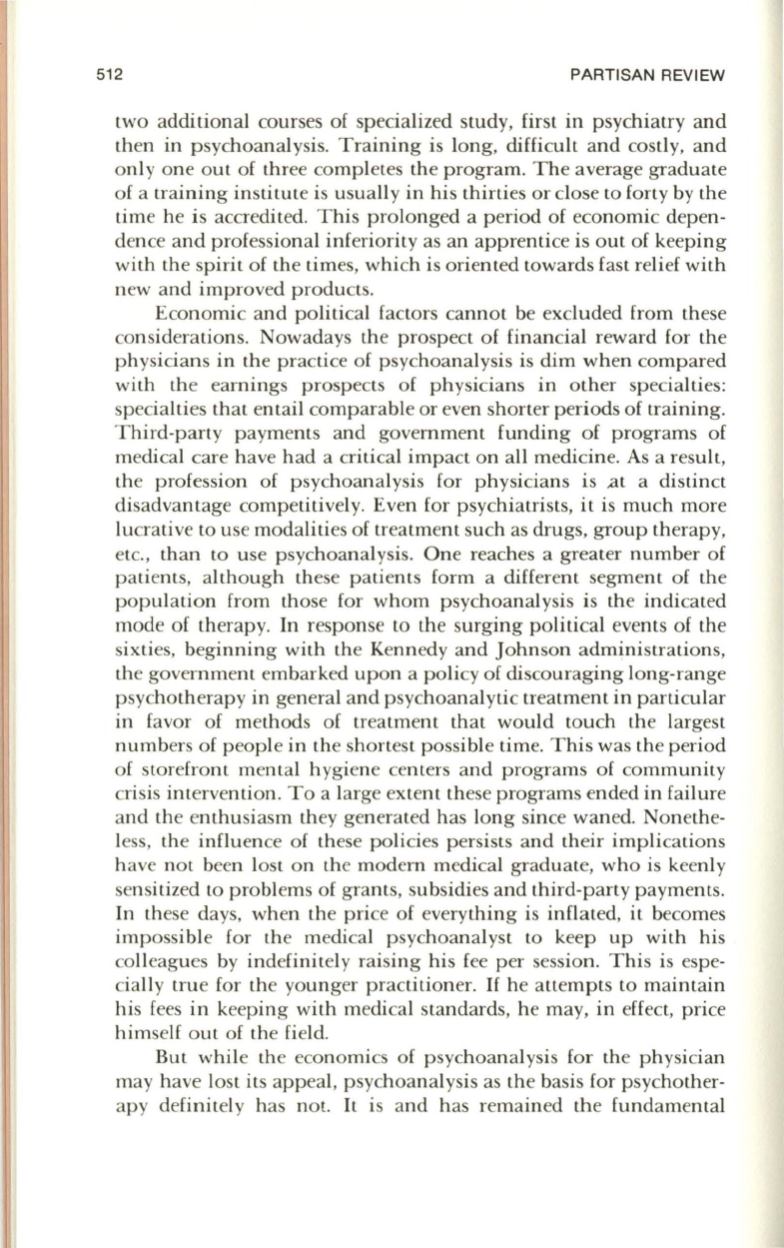
512
PARTISAN REVIEW
two additional courses of specialized study, first in psychiatry and
then in psychoanalysis. Training is long, difficult and costly, and
only one out of three completes the program. The average graduate
of a training institute is usuall y in his thirties or close to forty by the
time he is accredited. This prolonged a period of economic depen–
dence and professional inferiority as an apprentice is out of keeping
with the spirit of the times, which is oriented towards fast relief with
new and improved products.
Economic and political factors cannot be excluded from these
considerations. Nowadays the prospect of financial reward for the
physicians in the practice of psychoanalysis is dim when compared
with the earnings prospects of physicians in other specialties:
specialties that entail comparable or even shorter periods of training.
Third-party payments and government funding of programs of
medical care have had a critical impact on all medicine. As a result,
the profession of psychoanalysis for physicians is .at a distinct
disadvantage competitively. Even for psychiatrists, it is much more
lucrative to use modalities of treatment such as drugs, group therapy,
etc., than to use psychoanalysis. One reaches a greater number of
patients, although these patients form a different segment of the
population from those for whom psychoanalysis is the indicated
mode of therapy. In response
to
the surging political events of the
sixties, beginning with the Kennedy and Johnson administrations,
the government embarked upon a policy of discouraging long-range
psychotherapy in general and psychoanalytic treatment in particular
in favor of methods of treatment that would touch the larges t
numbers of people in the shortest possible time. This was the period
of storefront mental hygiene centers and programs of community
crisis intervention. To a large extent these programs ended in failure
and the enthusiasm they generated has long since waned. Nonethe–
less, the influence of these policies persists and their implications
have not been lost on the modem medical graduate, who is keenly
sensitized to problems of grants, subsidies and third-party payments.
In these days, when the price of everything is inflated, it becomes
impossible for the medical psychoanalyst to keep up with his
coll eagues by indefinitely raising his fee per session. This is espe–
ciall y true for the younger practitioner.
If
he attempts to maintain
his fees in keeping with medical standards, he may, in effect, price
himself out of the field.
But while the economics of psychoanalysis for the physician
may have lost its appeal, psychoanalysis as the basis for psychother–
apy definitely has not. It is and has remained the fundamental


